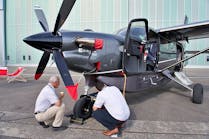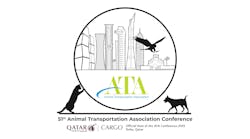Protecting the Aviation Manufacturing and Maintenance Workforce
Prior to the COVID-19 pandemic, the outlook for the general aviation industry looked encouraging, particularly given that in 2019 piston airplane and business jet shipments reached decade highs. The future of the industry looked even more promising, given ongoing development and innovations in manufacturing methods, aircraft design, avionics, automation and propulsion systems. When the pandemic hit, our industry was significantly impacted.
The impact on manufacturers could be seen from the 2020 year-end report of the shipments and billings of general aviation aircraft, which we issued in late February. The pandemic negatively impacted general aviation and stifled the industry’s growth. The value of aircraft deliveries decreased by 16% from 2019. Each segment of the industry suffered losses.
A study commissioned by the Aerospace Industries Association (AIA), in July of 2020, estimated that 100,000 manufacturing workers have already lost their jobs and 220,000 additional jobs remain at risk of furlough or layoff.
The Aeronautical Repair Station Association (ARSA) measured the impact on the maintenance community in October of 2020. They found that maintenance revenue had fallen sharply and that the decline in business activity led to job losses. It is projected that more than 50,000 jobs were lost, which accounts for nearly a quarter of the aviation maintenance workforce.
Prior to the pandemic, many business aviation maintenance organizations reported that they were seeing shortages in available qualified and skilled technicians. Further, many companies reported additional challenges retaining qualified technicians as many would pursue careers with commercial operators or other industries seeking similar technical skillsets in fields such as amusement parks, HVAC, windfarms and manufacturing.
The overall pandemic-related economic losses and corresponding workforce reductions has resulted in a temporary increase in availability of qualified technicians. However, as companies begin to return to normal operations and staffing levels, the future availability of this highly-skilled workforce is uncertain. Will technicians move to other fields? Would a technician shortage reappear? It is our hope that we can work to keep our skilled workforce within the industry.
Over the last year, GAMA and other aviation associations, including ARSA and AIA, have been working with members of Congress to build support for our manufacturers, maintenance providers, the supply chain and their respective workforces. Fortunately, the latest congressional pandemic relief package included provisions to help the industry address these challenges.
Provisions within the American Rescue Plan Act establish a $3 billion payroll support program within the U.S. Department of Transportation (USDOT) to provide grants to eligible manufacturers, maintenance providers and their suppliers to maintain their workforce during the pandemic. This temporary program would be a 50-50 cost share between employers and the federal government to retain, recall or rehire aviation manufacturing and maintenance employees.
We are deeply grateful for the leadership shown by Senators Cantwell (D- Wash.), Moran (R-Kan.) and Warner (D-Va.), as well as Representatives Larsen (D-Wash) and Estes (R-Kan.), who all championed this innovative cost-sharing program. They each played a pivotal role in the drafting, promoting and passage of the program and will be critical in helping the USDOT implement this vital program to help strengthen our fragile supply chain, keep highly-skilled workers in the industry, as well as support some of the smaller companies that need assistance to maintain operations.
The aviation manufacturing and maintenance industry is an integral part of the U.S. economy and transportation system. It is important that we continue to work with Congress to ensure that our industry receives the assistance needed to aid in the recovery.
Over the last year, our industry has faced headwinds, but we have shown that we can adapt to overcome them. Despite the pandemic-related setbacks, the industry is very resilient and we remain optimistic given the talent and strength of our phenomenal workforce and the history of industry leaders and its employees responding to challenges.



